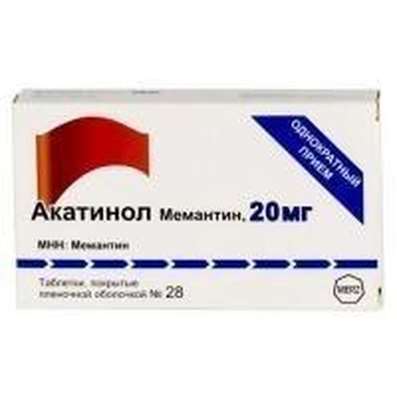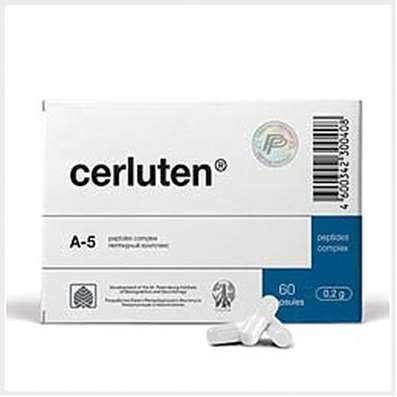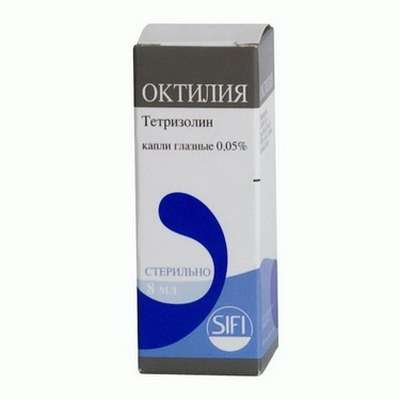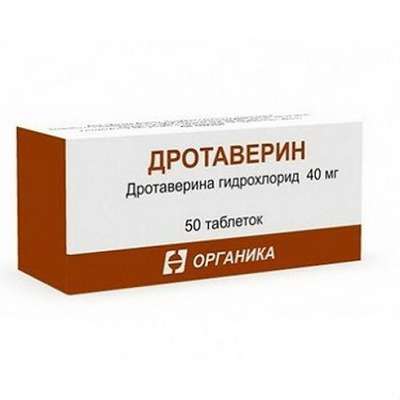Instruction for use: Parnaparin sodium
I want this, give me price
Trade name of the drug – Fluxum
The Latin name of the substance Parnaparin sodium
Natrii parnaparinum (genus. Natrii parnaparini)
Chemical name
The sodium salt of depolymerized heparin with an average relative molecular weight of 4,000 to 6,000
Pharmacological group:
Anticoagulants
The nosological classification (ICD-10)
I80 Phlebitis and thrombophlebitis: Diseases of peripheral vessels; Inflammation of superficial veins; Inflammatory diseases of veins; Deep venous thrombophlebitis; The disease of veins; Disease of the veins of the lower extremities; Diseases of peripheral vessels; Migrating phlebitis; Insufficiency of veins of lower extremities; Exacerbation of chronic thrombophlebitis; Acute thrombophlebitis; Acute thrombophlebitis of superficial veins; Periphlebitis; Periflebit surface; Superficial inflammation of veins; Surface thrombophlebitis; Surface phlebitis; Thrombophlebitis; Deep vein thrombophlebitis; Thrombophlebitis superficial; Phlebitis; Phlebitis of deep veins; Phlebitis of superficial veins; Phlebopathy; Chronic thrombophlebitis; Endophlebitis
I82 Embolism and thrombosis of other veins: Recurrent venous thrombosis; Postoperative thrombosis; Venous thrombosis; Acute venous thromboembolism; Recurrent vein thrombosis; Venous thrombosis; Thrombosis of veins of internal organs; Venous thrombosis; Deep vein thrombosis; Thrombosis of blood vessels; Vascular thrombosis; Thrombosis of veins; Deep vein thrombosis; Thromboembolic diseases; Thromboembolism of veins; Severe venous thrombosis; Embolism; Embolism of veins; Thromboembolic complications
I87.0 Postphlebitic syndrome: post-thrombotic venous insufficiency; Postthrombotic disease; Post thrombophlebitic syndrome; Post-thrombophlebitis; Post-thrombophlebitic syndrome; Postphlebitic syndrome; Post thrombotic syndrome; Postphlebitic syndrome (stasis syndrome)
I87.2 Venous insufficiency (chronic) (peripheral): Painful foot fatigue; The pain and feeling of heaviness in the legs; The pain of chronic venous insufficiency; Venous insufficiency; Venous insufficiency of the lower limbs; Venous-lymphatic insufficiency; Venous edema; phlebostasis; Ischemic lesions stop; Lipedema; Microcirculatory-trophic disorders; Violation of venous circulation; Violation of venous circulation of the lower limbs; Disorders of venous circulation; Disorders of the peripheral circulation in the extremities; Lack of chronic venous; Insufficiency of venous circulation; Organic venous insufficiency of the lower limbs; Acute venous insufficiency of the lower limbs; Swelling in the legs; limb edema; Swelling in the legs; Swelling of lower limbs due to chronic venous insufficiency; Swelling of the legs; Edematous pain in venous insufficiency; Swelling and pain in the legs; The feeling of heaviness in the legs; Prevarikozny syndrome; The static heaviness in the legs; Trophic tissue changes; Trophic tissue disorders; Trophic disorders; Heaviness in the legs; Fatigue in the legs; Chronic venous insufficiency; Chronic venous insufficiency of the lower limbs; Chronic ischemic disease of the lower extremities; Chronic insufficiency of venous circulation; The feeling of heaviness in the legs; The feeling of heaviness in the legs during pregnancy; The feeling of heaviness in the legs after prolonged standing
Z100 * CLASS XXII Surgical practice: Abdominal surgery; adenomectomy; Amputation; Coronary angioplasty; Angioplasty of the carotid arteries; Antiseptic skin treatment for wounds; Antiseptic Hand; Appendectomy; atherectomy; Balloon coronary angioplasty; Vaginal hysterectomy; The coronary bypass; Interventions in the vagina and cervix; Interventions on the bladder; Intervention in the mouth; Restoration and reconstructive surgery; Hand hygiene of medical personnel; Gynecologic surgery; Gynecological intervention; Gynecological surgery; Hypovolemic shock during operations; Disinfection of purulent wounds; Disinfection of wounds edges; Diagnostic intervention; Diagnostic procedures; Cervical Diathermocoagulation; Long-surgery; Replacing the fistula catheters; Infection in orthopedic surgery; Artificial heart valve; cystectomy; Short-term outpatient surgery; Short-term operation; Short surgical procedures; Krikotireotomiya; Blood loss during surgery; Bleeding during surgery and in the postoperative period; Kuldotsentez; laser photocoagulation; laser coagulation; retinal laser coagulation; Laparoscopy; Laparoscopy in Gynecology; CSF fistula; Small gynecological operations; Small surgical procedures; Mastectomy and subsequent plastic; mediastinotomy; Microsurgical operations on the ear; Mukogingivalnye operation; suturing; Minor surgery; neurosurgical operation; Immobilization of the eyeball in ophthalmic surgery; testectomy; pancreatectomy; Perikardektomiya; The period of rehabilitation after surgery; The period of convalescence after surgery; Percutaneous transluminal coronary angioplasty; Pleural thoracentesis; Pneumonia postoperative and posttraumatic; Preparation for surgical procedures; Preparation for surgery; Preparation of the surgeon's hands before surgery; Preparation of the colon for surgical procedures; Postoperative aspiration pneumonia in neurosurgical and thoracic surgery; Postoperative nausea; Postoperative bleeding; postoperative granuloma; postoperative shock; The early postoperative period; myocardial revascularization; Radiectomy; gastric Resection; bowel resection; uterine Resection; liver Resection; enterectomy; Resection of part of the stomach; Reocclusion of the operated vessel; Bonding tissues during surgical procedures; Removal of sutures; Condition after eye surgery; Condition after surgery; Condition after surgery in the nasal cavity; Condition after gastrectomy; Status after resection of the small intestine; Condition after tonsillectomy; Condition after removal of the duodenum; Condition after phlebectomy; Vascular surgery; Splenectomy; Sterilization of surgical instruments; Sterilization of surgical instruments; sternotomy; Dental surgery; Dental intervention in periodontal tissues; strumectomy; Tonsillectomy; Thoracic surgery; Thoracic surgery; total gastrectomy; Transdermal intravascular coronary angioplasty; Transurethral resection; Turbinektomiya; Removal of a tooth; cataract surgery; Removal of cysts; tonsillectomy; Removal of fibroids; Removing the mobile primary teeth; Removing polyps; Removing broken tooth; Removal of the uterus body; Removal of sutures; Fistula likvoroprovodyaschih ways; Frontoetmoidogaymorotomiya; Surgical infection; Surgical treatment of chronic limb ulcers; Surgery; The surgery in the anal area; The surgery on the colon; Surgical practice; The surgical procedure; Surgical interventions; Surgery on the gastrointestinal tract; Surgical procedures on the urinary tract; Surgical procedures on the urinary system; Surgical intervention of the genitourinary system; Surgical procedures on the heart; Surgical manipulation; surgery; Surgery on the veins; Surgical intervention; Vascular surgery; Surgical treatment of thrombosis; Surgery; cholecystectomy; Partial gastric resection; hysterectomy; Percutaneous transluminal coronary angioplasty; Percutaneous transluminal angioplasty; Coronary artery bypass; tooth Extirpation; Extirpation of milk teeth; pulpectomy; pulsative cardiopulmonary bypass; tooth Extraction; teeth Extraction; cataract extraction; Electrocoagulation; endourological intervention; episiotomy; Etmoidotomiya; Complications after tooth extraction
CAS code
91449-79-5
Characteristics of substance Parnaparin sodium
Anticoagulant direct action.
Parnaparin sodium is a low molecular weight glycosaminoglycan with a molecular weight of 4000 to 6000 Da (average molecular weight of about 5000 Da), which is obtained during the depolymerization of heparin isolated from the mucous membrane of the small intestine of a pig.
Pharmacology
Mode of action - Anticoagulant, antithrombotic.
Pharmacodynamics
Parnaparin sodium has an antithrombotic effect. In vitro and in vivo, it suppresses to a large extent the factor Xa, has little effect on factor IIa and APTT. Antithrombotic activity (anti-Xa) is superior to anticoagulant (anti-IIa). Thus, the ratio of anti-Xa / anti-IIa activity is 1.5 to 3 (compared to heparin, for which this ratio is 1). Parnaparin sodium does not have a proaggregant platelet effect.
Pharmacokinetics
The pharmacokinetics of sodium paraparin is linear in the dose range from 3200 to 12800 anti-Xa IU. After sc administration of a single dose, the maximum anti-Xa activity in the plasma is created after 2-3 hours. Then a decrease in activity is observed, which is still determined 12 hours after the dose is administered. T1 / 2 for about 6 hours. With repeated dosing, the steady state of pharmacokinetics is observed on day 3 when administered at a dose of 3200 anti-Xa IU 2 times a day and on the 4th day when administered at a dose of 6400 anti-Xa IU 1 time day.
The bioavailability of sodium parnaparin, which is evaluated for anti-Xa IU activity, is close to 100%. AUC has a linear dose dependence. With the n / k route of administration, the pharmacokinetic profile of the anti-Xa activity is more favorable than the profile with the iv introduction, since it has a smoother curve with fewer peaks and a slower decrease in activity. Parnaparin sodium is distributed in the liver and kidneys. In the liver, it is metabolized to inactive compounds and is excreted from the body through the kidneys.
Application of substance Parnaparin sodium
Prevention of deep vein thrombosis:
- with general surgical and orthopedic operations;
- in patients with a high risk of developing deep vein thrombosis.
Treatment of deep vein thrombosis, postthrombophlebitic syndrome, chronic venous insufficiency, acute thrombophlebitis of superficial veins, varicophlebitis.
Contraindications
Hypersensitivity to parnaparin, heparin and pork products; Conducting regional anesthesin in patients receiving parnaparin sodium for therapeutic purposes; Conditions or diseases complicated by bleeding, as well as an increased risk of bleeding or a predisposition to bleeding, incl. Violations of hemostasis (with the exception of coagulopathy of consumption, not due to heparin), peptic ulcer of the stomach and duodenum and erosive and ulcerative lesions of the gastrointestinal tract during exacerbation, angiodysplasia, chorioretinopathy, hemorrhagic stroke; Thrombocytopenia induced by sodium parnaparin, incl. In the anamnesis; Acute bacterial endocarditis (with the exception of endocarditis of the prosthesis); Severe uncontrolled arterial hypertension: blood pressure ≥180 / 100 mm Hg. P. Severe craniocerebral injury in the postoperative period; Simultaneous application with salicylates and other NSAIDs, antiaggregant drugs (including clopidogrel, dipyridamole), sulfinpyrazone and a combination of high doses of parnaparin sodium with ticlopidine; Children under 18 years of age (efficacy and safety not established)
Restrictions
Renal and hepatic impairment; Mild and moderate hypertension; Peptic ulcer of the stomach and duodenum and erosive-ulcerative lesions of the gastrointestinal tract in the anamnesis or other diseases / conditions in the anamnesis that may be complicated by bleeding; Heparin-induced thrombocytopenia and thrombocytopenia caused by other low molecular weight heparins, incl. In the anamnesis; A history of chorioretinopathy; Diseases of the brain and spinal cord in the postoperative period; Simultaneous application with indirect anticoagulants, systemic GCS, dextran (for parenteral administration); Combination of low doses of parnaparin sodium with ticlopidine.
Pregnancy and breast-feeding
Animal studies have not shown teratogenic and embryotoxic effects of sodium paraparin. There is no convincing data on penetration through the placental barrier and excretion into breast milk. However, since the risk of the toxic effect of sodium parnaparin on the fetus can not be ruled out completely, pregnancy should be taken only in case of emergency and under the direct supervision of a physician.
If it is necessary to use lactation, breastfeeding should be discontinued.
Side effects of the substance Parnaparin sodium
Sometimes there are cases of thrombocytopenia, allergic reactions, hematoma and necrosis of the skin at the injection site. Necrosis of the skin may be preceded by purpura or erythematous painful foci with or without common symptoms. An increase in hepatic transaminase activity may be observed. In sporadic cases, there is spinal or epidural hematoma associated with the prophylactic use of the drug during spinal, epidural and lumbar puncture. Hematoma causes various degrees of severity of neurological disorders, including persistent or irreversible paralysis.
Interaction
Medicinal combinations that are not recommended
Acetylsalicylic acid, other salicylates, NSAIDs: increased risk of bleeding due to antiplatelet action and damaging effect on the mucosa of the gastrointestinal tract of these drugs.
Ticlopidine: increased risk of bleeding due to antiplatelet action.
It is not recommended to use together with high therapeutic doses of parnaparin sodium. When used together with low prophylactic doses of parnaparin sodium, careful clinical observation and monitoring of coagulation factors is necessary.
Other antiplatelet drugs (eg clopidogrel, dipyridamole): increased risk of bleeding.
Sulfinpyrazone: increased risk of bleeding.
Medicinal combinations that can be used with caution
Oral anticoagulants: increased anticoagulant action. Careful observation of the patient is necessary. To assess the effect of these drugs on hemostasis, blood tests should be taken before the appointment of parnaparin sodium.
Systemic GCS: increased risk of bleeding when taking SCS in high doses for more than 10 days due to damage to the gastrointestinal mucosa and direct exposure to the vessel wall. The use of sodium parnaparin in conjunction with GCS should be justified and carried out under the supervision of a physician.
Dextran (for parenteral administration): increased risk of bleeding due to antiplatelet action. When combined, a dose adjustment of sodium paraparin is necessary, so that the reduction in blood coagulation is not more than 1.5 times.
The effect of sodium parnaparin decreases when combined with ascorbic acid, antihistamines, cardiac glycosides, penicillin (iv), tetracycline, phenothiazine derivatives.
Incompatibility
Parnaparin sodium is an acidic polysaccharide that forms insoluble complexes with bases. For this reason, sodium parnaparin solution is incompatible with solutions of vitamin K, B vitamins, hydrocortisone, hyaluronidase, calcium gluconate, quaternary ammonium bases, chloramphenicol, tetracycline and aminoglycosides.
Salicylic acid preparations, NSAIDs, indirect anticoagulants, glucocorticoids, antiaggregants increase (mutually) the risk of bleeding.
Overdose
Symptoms: an accidental overdose can lead to bleeding, which is not observed when applied in therapeutic doses.
Treatment: to neutralize the action, protamine sulphate IV should be given at a rate of 0.6 ml protamine sulphate per 0.1 ml sodium paraparin.
Routes of administration
SC.
Precautions for the substance Parnaparin sodium
Parnaparin sodium cannot be administered IM.
Thrombocytopenia induced by heparin
It is known that sodium parnaparin, like heparin itself and other low molecular weight heparins, can cause thrombocytopenia. Heparin-induced thrombocytopenia usually develops 4-10 days after the start of treatment, or earlier with repeated cases. In 10-20% of patients, there is early mild thrombocytopenia (platelets ≥ 100,000 / mql), which can persist or regress upon continued treatment. As a result of the formation of antibodies to the heparin / platelet factor 4 complex, in some cases a more severe immune form, heparin-induced thrombocytopenia of type II, with subsequent thrombosis and thromboembolism, can occur. In the arteries of the brain, lungs, lower limbs, often with a fatal outcome. Patients with parnaparin sodium should be carefully monitored. For long-term treatment, the number of platelets should be determined before starting therapy with sodium parapaparin and 2 times a week during the first month, and then monitoring the number of platelets may be more rare. With special caution should appoint parnaparin sodium patients who have a history of which there is information about thrombocytopenia caused by heparin or other low molecular weight heparin, they must calculate the number of platelets every day. If thrombocytopenia occurs during heparin treatment, an alternative treatment may be therapy with low molecular weight heparins. In this case, the number of platelets should be determined daily, and if thrombocytopenia persists, low-molecular-weight heparin should be discontinued as early as possible. When thrombocytopenia is less than 100,000 / mql, the occurrence and progression of thrombosis of sodium paraparin should be reversed and the patient transferred to another anticoagulant therapy. Switching to oral anticoagulant therapy in these cases is not recommended, because It is known about the progression of thrombosis.
If suspicion of heparin-induced thrombocytopenia, platelet aggregation tests in vitro are not of great diagnostic value, consultation of specialists is necessary.
Spinal / epidural anesthesia
Carrying out spinal or epidural anesthesia, spinal epidural analgesia or lumbar puncture on the background of prophylactic use of sodium parapaparin, as well as other low molecular weight heparins, can be complicated by spinal or epidural hematoma with the development of persistent or irreversible paralysis. The risk of these complications increases with the use of epidural catheters, concomitant NSAIDs, antiplatelet drugs or anticoagulants, trauma or repeated spinal punctures, the presence of initial hemostasis disorders or in elderly patients. If it is necessary to perform anesthesia / analgesia of this type against the background of preventive use of sodium parapaparin, the presence of these risk factors before these interventions should be carefully checked.
Usually, spinal catheters are installed no earlier than 8-12 hours after the last injection of a prophylactic dose of low molecular weight heparin. Do not administer sodium parnaparin for 2-4 hours before and after the catheter is installed / removed. The injection should be delayed or canceled if blood is aspirated from the spinal canal during spinal or epidural anesthesia. The catheter should be removed as late as possible (8-12 hours) after the last prophylactic administration of sodium parnaparin.
Particular attention should be given to patients who received parnaparin sodium before or after epidural or spinal anesthesia, checking for neurologic symptoms such as back pain, sensory and motor disorders (numbness or weakness in the lower extremities), impaired bowel or bladder function. Patients should be informed of the need to seek immediate medical attention if these symptoms occur. If suspected epidural or spinal hematoma requires immediate diagnosis and treatment, including decompression of the spinal cord.
Low molecular weight heparins differ in molecular weight and specific activity, in doses, therefore it is not recommended to alternate the use of sodium parnaparin with other low molecular weight heparins during the treatment.
When skin necrosis occurs, treatment with sodium paraparin must be interrupted.
Influence on the ability to drive vehicles. Parnaparin sodium does not affect the ability to drive vehicles and engage in activities that require increased attention and speed of psychomotor reactions.

 Cart
Cart





